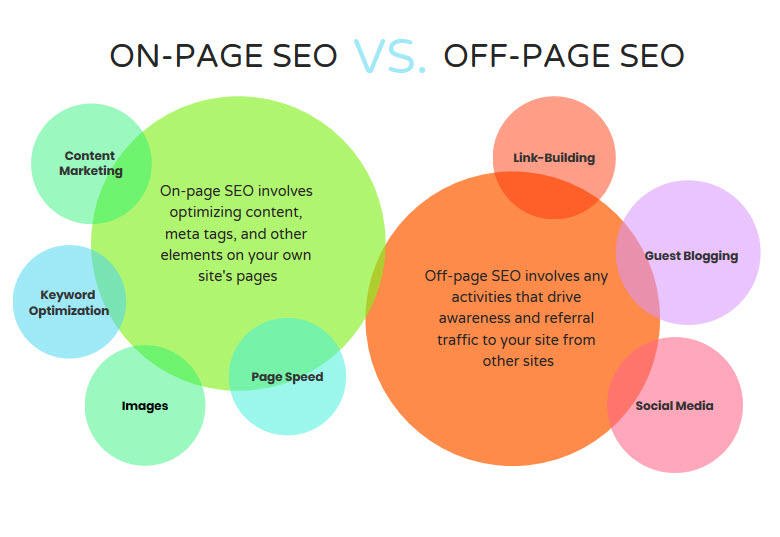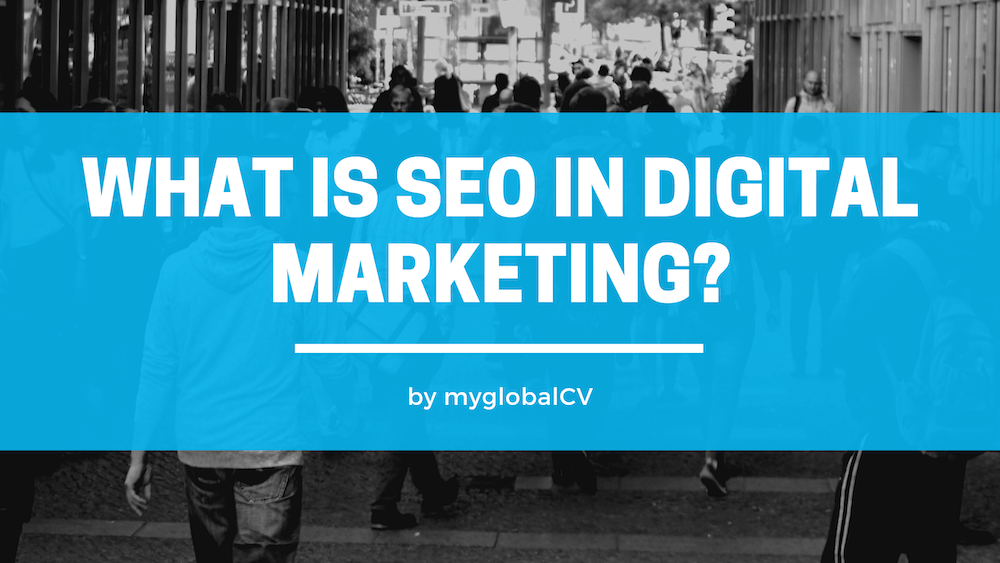What is SEO in digital marketing?
Search Engine Optimization (SEO) is the process of optimizing a website to improve its visibility and ranking in search engine results pages (SERPs). It is a critical component of digital marketing as it helps businesses to attract organic traffic to their website, resulting in increased brand awareness, leads, and sales.
SEO involves a combination of on-page and off-page optimization techniques to improve a website’s visibility and relevance to search engines. On-page optimization includes optimizing the website’s content, meta tags, images, and structure, while off-page optimization includes building backlinks, social media engagement, and online reputation management.
One of the most important aspects of SEO is keyword research. This involves identifying the keywords and phrases that people use to search for products or services related to your business. These keywords are then incorporated into the website’s content, meta tags, and images, making it more relevant to search engines and users.
What does on-page optimization includes?
Title tags: The title tag is the text that appears in the browser’s tab and is also used as the title of the webpage in search engine results. It should be unique, relevant and include the main keywords for the page.
Meta descriptions: The meta description is the text that appears under the title tag in search engine results. It should be a concise and accurate summary of the page’s content and include the main keywords.
Headings: Heading tags (H1, H2, H3) are used to structure the content of a webpage and make it easier for users and search engines to understand the main topics covered. The H1 tag should be used for the main title of the page, while H2 and H3 tags can be used for subheadings.
Content: Content is the most important element of on-page optimization. It should be unique, relevant, and of high quality. It should also include the main keywords and provide value to users.
Images: Images can also be optimized for SEO. This includes using descriptive file names and alt tags that include the main keywords.
What does off-page optimization includes?
Backlinks: Backlinks are links from other websites that point to your website. They are an important factor in SEO as they indicate to search engines that other websites consider your content to be valuable and relevant.
Social media: Social media is an important part of off-page optimization. It can help to increase brand awareness and drive traffic to your website. By sharing high-quality content on social media, you can attract backlinks and increase your website’s visibility.
Online reputation management: Online reputation management is the process of monitoring and managing the online reputation of your brand. This includes monitoring customer reviews, comments, and social media mentions, and responding to any negative feedback.
SEO is an ongoing process and requires regular monitoring and adjustments to be effective. This includes regularly monitoring your website’s traffic, search engine rankings, and backlink profile, as well as making changes to your website’s content, meta tags, and images.
It is also important to stay up-to-date with the latest SEO trends and best practices. This includes keeping an eye on the latest search engine algorithm updates and making sure your website is mobile-friendly and secure (HTTPS).

Summary
SEO is a critical component of digital marketing and helps businesses to attract organic traffic to their website, resulting in increased brand awareness, leads, and sales. It involves a combination of on-page and off-page optimization techniques to improve a website’s visibility and relevance to search engines. Keyword research, on-page optimization, backlinks and social media engagement are some of the key elements of SEO.
It is important to note that SEO is not a one-time process and requires regular monitoring and adjustments to be effective. This includes regularly monitoring your website’s traffic, search engine rankings, and backlink profile, as well as making changes to your website’s content, meta tags, and images.
- To effectively implement SEO, it is important to conduct keyword research to identify the keywords and phrases that people use to search for products or services related to your business. These keywords should then be incorporated into the website’s content, meta tags, and images, making it more relevant to search engines and users.
- Long-tail keywords are longer, more specific phrases that are less competitive and more likely to convert. These keywords are more specific and have lower search volume, but they can be more effective for targeting specific audiences and driving conversions.
- Targeting high-volume keywords for SEO is also important, as these keywords have a higher search volume and can help to drive more traffic to your website. However, it is important to note that targeting high-volume keywords can be more competitive, so it is important to conduct keyword analysis to determine the level of competition and the potential return on investment.
- Conducting competitor keyword research is also important for SEO, as it allows you to understand the keywords that your competitors are targeting and how you can differentiate your content and optimize for those keywords.
- Local SEO keywords are also an important aspect of SEO, as they help to target local audiences and drive more traffic to your business. These keywords include the name of your city, state, or country, and can be incorporated into your website’s content, meta tags, and images.
- Keyword tracking for SEO is also important, as it allows you to monitor your website’s search engine rankings for specific keywords and make adjustments to your SEO strategy accordingly.
- Keyword density is also an important aspect of SEO, as it refers to the number of times a keyword appears in your website’s content. A higher keyword density can help to improve your website’s visibility and relevance to search engines, but it is important to ensure that the content is still high-quality and relevant to users.
- Finally, developing a SEO keywords strategy is crucial for success in SEO. This includes identifying your target audience, conducting keyword research, and creating a plan to optimize your website’s content, meta tags, and images for those keywords. It also includes monitoring your website’s performance and making adjustments to your strategy accordingly.
Conclusion
SEO is a critical component of digital marketing that helps businesses to attract organic traffic to their website, resulting in increased brand awareness, leads, and sales. It is an ongoing process that requires regular monitoring and adjustments to be effective. By conducting keyword research, on-page optimization, backlinks and social media engagement, targeting high-volume and long-tail keywords, competitor keyword research, local SEO keywords, keyword tracking, keyword density and developing a SEO keywords strategy, you can improve your website’s visibility and relevance to search engines and drive more traffic to your business.



